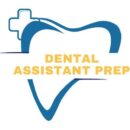Elevate your test prep with these essential DANB exam tips for success.
- Comprehensive Study Guide: Review recommended materials tailored to the DANB exam syllabus.
- Effective Study Schedule: Allocate dedicated study hours to cover all DANB topics thoroughly and efficiently.
- Practice Exams: Utilize simulation tests to familiarize yourself with the real DANB testing environment.
Master your DANB exam with confidence and strategy.
Understanding DANB Exams
For anyone serious about their dental assisting career, understanding the structure and content of the Dental Assisting National Board exams is an essential first step. Let’s delve into what these exams entail, and how they pave the way for a thriving career in dental assisting.
Overview of DANB Exams
The DANB offers a suite of exams, each tailored to measure the competencies required in different aspects of dental assisting. The Certified Dental Assistant (CDA) exam is one of the most popular, comprising three component exams — General Chairside Assisting (GC), Radiation Health and Safety (RHS), and Infection Control (ICE).
Exam Format and Types
Candidates may encounter a range of question formats, from multiple-choice to scenario-based queries. Additionally, exams like RHS and ICE are delivered via computer-adaptive testing, which means the questions dynamically adjust to your ability level.
Exam Objectives
The primary goal of DANB exams is to assess a candidate’s readiness to provide safe and effective dental care. This encompasses a deep knowledge of dental procedures, equipment, safety protocols, and administrative functions. For an in-depth look at the detailed content areas, make sure to review the exam outlines.
Exam Eligibility and Registration Process
Navigating the path to your DANB exam begins with confirming eligibility and understanding the registration process. Ensuring you meet the requirements and register correctly will set you firmly on the course to certification.
Confirming Eligibility
Before you start preparing for the DANB exam, first confirm that you’re eligible to sit for it. The main pathways include graduating from a Commission on Dental Accreditation (CODA)-accredited program, or a mix of high school education and work experience. Check the guidelines for more specific eligibility criteria.
Registration Steps
Once you’ve confirmed your eligibility, it’s time to register. The process is straightforward:
- Complete the Application: Fill out the exam application form, noting which exams you plan to take.
- Submit Documentation: Provide any requested proof of eligibility, such as educational transcripts or work verification.
- Pay Examination Fees: Submit the required fee for each component of the exam.
Scheduling the Exam
Finally, after registering, you’ll need to schedule your exam. Choose a date that gives you ample time to study, and make a note of the location and time to ensure no last-minute confusion.
Detailed Exam Outlines and References
A well-structured exam preparation begins with understanding exactly what will be on the test. Let’s take a closer look at the specific topics you need to study.
Key Content Areas
For each part of the exam, DANB provides detailed outlines that list the domains and subdomains that will be covered. For instance, the General Chairside Assisting component focuses on collection and recording of clinical data, chairside dental procedures, and lab materials and procedures.
Recommended Study References
DANB provides a list of reference materials that were used to create the exam. Use these books and resources as your primary study materials. For an added layer of preparation, consider utilizing interactive, online practice tests and courses offered by affiliates like The DALE Foundation.
Creating an Effective Study Schedule
Crafting a study plan that accommodates your personal and professional life is crucial for a stress-free preparation period. Let’s explore how to create a study schedule that works best for you.
Allocating Study Time
It’s ideal to begin studying at least 1-2 months before the exam date. Break your study material into small, manageable sections, and set specific times each day devoted to studying.
Balancing Your Commitments
Life can get hectic, so it’s important to:
- Set Realistic Goals: Don’t overcommit. A few hours of focused study is better than overextending yourself.
- Take Breaks: Regular breaks help maintain focus and prevent burnout.
- Seek Support: Inform your friends and family of your goals so they can support you.
Selecting Appropriate Study Materials
The right study materials are your best allies in preparing for the DANB exam. With an abundance of options available, how do you select the resources that will maximize your chances of success?
Assessing Study Guide Quality
When choosing study guides, look for materials that:
- Align with DANB Outlines: Cross-reference the guide’s content with the official DANB outlines to ensure coverage.
- Are Up-to-Date: Ensure the edition of your study materials reflects the latest industry standards and practices.
Incorporating Varied Learning Tools
Don’t just stick to textbooks. Include a variety of tools such as:
- Flashcards: For memorizing terms and concepts.
- Online Quizzes and Practice Tests: To simulate the exam experience and test your knowledge under timed conditions.
Employing Strategic Study Methods
Different study methods cater to unique learning styles. To optimize your study time, employ strategies that enhance your retention and comprehension of the material.
Active Recall
Active recall forces you to retrieve information from memory, enhancing long-term retention. This could be as simple as quizzing yourself with flashcards or teaching concepts to another person.
Spaced Repetition
This technique involves reviewing information at increasing intervals. Start by studying a topic and returning to it after increasingly longer periods — a day later, then a few days later, and so on.
Study Groups and Partners
Studying in groups or with a partner can provide:
- Motivation: Keeping each other accountable can be a powerful motivator.
- Perspective: Group members might bring up points or questions you hadn’t considered.
Leveraging Practice Tests and Simulations
Practice tests are not just a benchmark for your existing knowledge, they’re an active learning tool that can significantly enhance your readiness for the actual DANB exam. By using simulations and practice tests, you’ll familiarize yourself with test formats, timing, and the mental stamina required for the exam day.
Importance of Practice Tests
- Benchmarking Progress: Practice exams can help you determine how well you’re likely to perform on the actual DANB exam and pinpoint areas where you need further study.
- Time Management: These tests can also teach you how to manage the limited time available during the exam efficiently.
Finding Quality Practice Exams
Seek out practice tests that are as close to the format of the DANB exams as possible. You can find quality simulations on the DALE Foundation’s website, which provides interactive, online practice tests designed in a manner consistent with the actual exam.
Strategy for Using Simulations
Integrate practice tests into your study schedule in the following ways:
- Early Exposure: Start taking practice exams early in your study process to set a baseline for your knowledge.
- Consistent Practice: Continue to take these tests regularly to track your progress.
- Focused Review: After each test, spend time reviewing the questions you missed to understand your errors and learn the correct information.
Simulating the Test Environment
To get an accurate feel for the exam, try to recreate the test environment as closely as possible. Find a quiet spot, set a timer, and resist the urge to pause for breaks. This will help condition you for the pressures you’ll face on the actual test day.
Exam Day Strategies
The DANB exam day can be daunting, but with the right strategies in place, you can approach it with confidence. Here’s how to ensure you’re calm, prepared, and ready to perform at your best.
Before the Exam
- Verify the Logistics: Double-check your exam time and location, and plan to arrive early.
- Prepare Your Documents: Ensure you have the required identification and any necessary paperwork.
During the Exam
- Pacing: Keep an eye on the time and pace yourself so that you can answer all questions without rushing.
- Prioritizing Questions: Tackle questions you’re confident in first and leave the more challenging ones for later.
- Staying Calm: Practice deep-breathing techniques to keep panic at bay, ensuring you remain clear-headed throughout.
Post-Exam Composure
Once the exam is over, give yourself a moment to decompress. No matter how you think you performed, it’s important to recognize the effort you’ve put into reaching this point.
Understanding Computer-Adaptive Testing
The computer-adaptive nature of portions of the DANB Exam ensures that the difficulty of the test is tailored to your ability level. Understanding how this works could help you strategize better during the exam.
What is Computer-Adaptive Testing?
- Adjustable Difficulty: As you answer questions correctly, the test may present you with more challenging questions and vice versa.
- Individualized Assessment: This method aims to measure your ability more accurately by tailoring the difficulty of questions specifically for you.
Strategies for Adaptive Tests
- Consistency is Key: Aim for a steady performance rather than attempting to game the system.
- Focus on Every Question: Treat each question with equal importance; since the difficulty adjusts, you can’t afford to lose focus at any point.
Deciphering Exam Scoring
Understanding how the DANB exam is scored can help set realistic expectations and give insight into the significance of each question.
The Scoring Mechanism
- Scaled Scoring: The DANB exams are scaled, meaning your raw score (the number of questions answered correctly) is converted into a uniform scoring scale.
- No Penalization for Guessing: Since only correct answers contribute to your score, there’s no harm in making educated guesses when necessary.
Receiving Your Results
After completing the exam, you’ll typically receive your results immediately for computer-based tests, whereas paper exams may require a wait time for mailing and processing.
Post-Exam Steps and Maintaining Credentials
Once you’ve conquered the DANB exam, there are steps to take to maintain your newfound credentials and continue your professional development.
Interpreting Results
- Passing the Exam: If you’ve passed, you’ll receive information on how to obtain your official certificate and card.
- Retaking Failed Sections: In the event of not passing, review the provided score report to see which sections you need to focus on for a retake.
Maintaining Certification
- Annual Recertification: DANB credentials must be renewed annually, which includes the completion of continuing education, holding a current CPR certification, and paying a renewal fee.
- Keeping Track of Continuing Education: Make sure to log any continuing education credits in a timely manner for ease of renewal.
Continuing Professional Development
Engage in ongoing learning opportunities and become a part of professional networks within the dental community to ensure you remain at the forefront of dental assisting practice.
Conclusion: Next Steps in Your Dental Assisting Career
Successfully navigating the DANB exam is an achievement that speaks volumes about your dedication and skill. It is the start of a journey filled with opportunities for growth and advancement in the field of dental assisting. Your commitment to continuous learning and professional excellence will no doubt contribute to a rewarding and impactful career. Moving forward, harness the same determination and strategic approach that brought you through the DANB exam to excel in your role and provide the best care possible.

